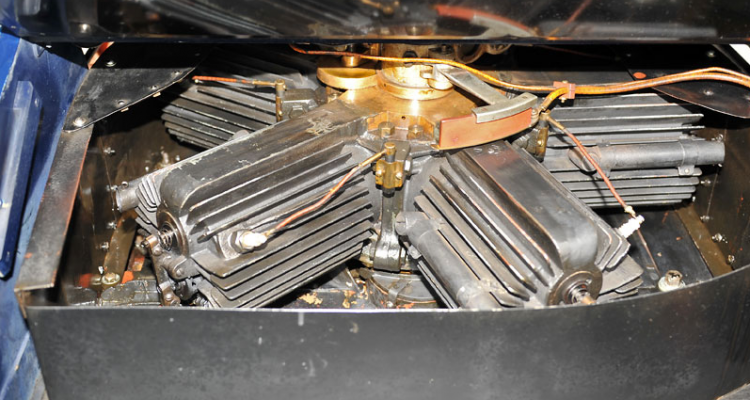By Omar C.
Buckle up people; we’re going back in time to the wonderful era of automotive genesis and meet Adams Farwell , to a time when innovation was rampant, computers were nothing more than a theoretical mathematics field of study, and engineering meant getting your hands dirty and building stuff.
During the dawn of the modern automobiles, many odd developments took place, and before car makers settled into the few common engine configurations i.e. inline four, V8, Boxer, Straight Six, etc. they used to experiment with many different approaches to the engineering conundrum that was the internal combustion engine.
Among those experiments is the Adams-Farwell five cylinder rotary engine, but wait, weren’t rotary engines devoid of pistons? Not quite, this one is quite special, since it’s not the internals that move around, it’s the engine block itself that spins around!
Nerd Alert! We’re about to get technical.
Just like a typical radial engine similar to those in Pre WWII airplanes, the cylinders are arranged around the crankshaft axis of rotation, but unlike a typical radial engine, the crankshaft here is stationary, and the whole block acts as output shaft and flywheel.
How does this work exactly? Well, it’s quite simple actually, the crankshaft is eccentric, meaning offset a certain distance from the block’s center axis, and this offset is equal to the stroke of the piston. This makes for the up down piston movement during rotation of the Adams-Farwell Rotary engine.
The Carburetor fits above the spinning block, which has one feeding channel that goes to every cylinder, without the need for a poppet valve, this engine has both inlet and exhaust ports, much like a typical 2 stroke would, but it’s actually a four stroke.
Intake happens as Air/fuel mixture is drawn from the intake runner in the cylinder housing, facing the rear of the car it’s installed in, the piston is at bottom dead center.
Compression takes place as the block rotates clockwise and the piston nears top dead center.
Ignition comes from a conductor plate that sits above the engine when the piston is at top dead center, comes in contact with the spark plug of firing cylinder. The firing order is described as “every other cylinder”.
Exhaust stroke happens as ports evacuate the remnant spent gasses as the cylinder nears bottom dead center once again.
By having a small number of moving parts, this configuration manages to be reliable, and can run for extended periods of time; with the advantage of not needing valve train gearing, nor other power draining components.
This engine is cooled by the air surrounding the spinning block, which has cooling fins that keep the temperature stable at all points of the RPM range. Outputting a massive 50 horsepower, and having a ludicrously smooth power deliver, there is no doubt that the Adams Farwell Five cylinder rotary is a prime example of mechanical finesse.
This oddity of engineering represents not only the creative endeavor and curious spirit of those early days of automotive design, but also the brilliance of those willing to push the envelope with true passion.

